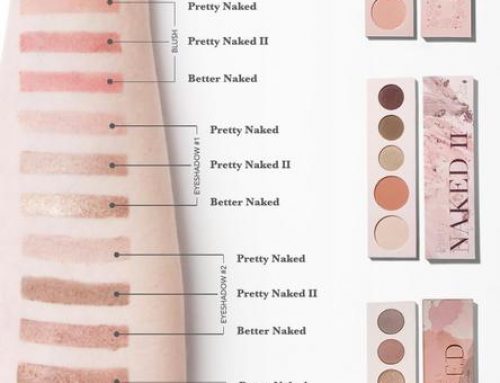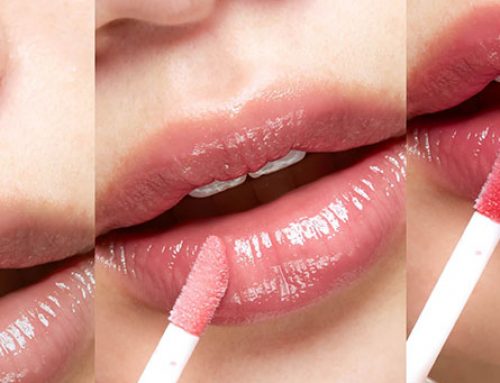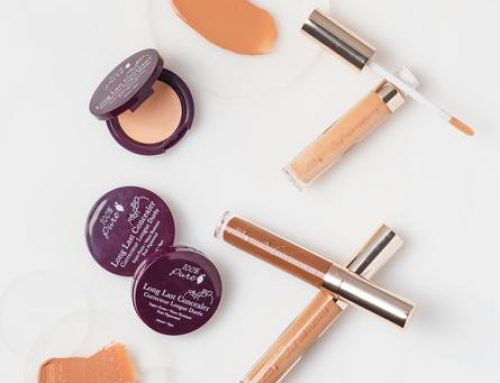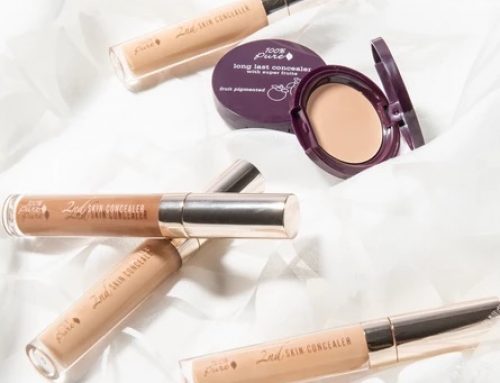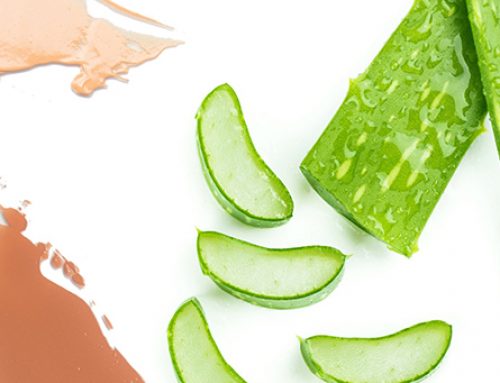Your search for the healthiest natural lipstick brand ends here.
A common misconception about natural cosmetics is that you need to sacrifice color payoff, vibrancy, or wearability for safer ingredients. WRONG! The proof is in the pigments: while anyone can add moisturizing shea butter or vitamin E to a lipstick, the pigments are where most brands lose any chance for a ‘natural’ lipstick formula. Since the beginning, Susie Wang has formulated our natural lipsticks with the ultimate trifecta of natural ingredients: she nailed natural pigments, natural moisturizers, and natural long-lasting color– all without sacrificing a truly natural formula.
Since the 1950’s, lipstick has been a beauty staple for the modern woman. But the history of this small and mighty cosmetic dates back to centuries earlier, when Islamic chemist and cosmetologist Abu al-Qasim al-Zahrawi crafted the first molded form of lip color. Centuries later, during the reign of Queen Elizabeth I, her royal visage of a stark white face with bold red lips immortalized the image of coloring one’s lips, leading to a brief trend in the 16th century (try our Fruit Pigmented Pomegranate Oil Anti Aging Lipstick: Poppy if you’re feeling queenly). It wasn’t until the 19th century that French cosmetologists began molding lipsticks for widespread, commercial sale.
While numerous innovations throughout the years have transformed lipstick from crushed plant powder to a chemically formulated cosmetic, there have been little to no regulations by the FDA on what can be used to make lipstick. This means that synthetic, toxic, and animal-derived ingredients have been freely tracing women’s lips for the last century, masquerading as a girl’s must-have cosmetic. Before you read on, we want you to remember one important fact: throughout a woman’s life, it’s estimated that she will ingest (aka unknowingly EAT) 4-8lbs of lipstick through licking lips, saliva runoff, and eating. Got that? Great, then let’s read on.
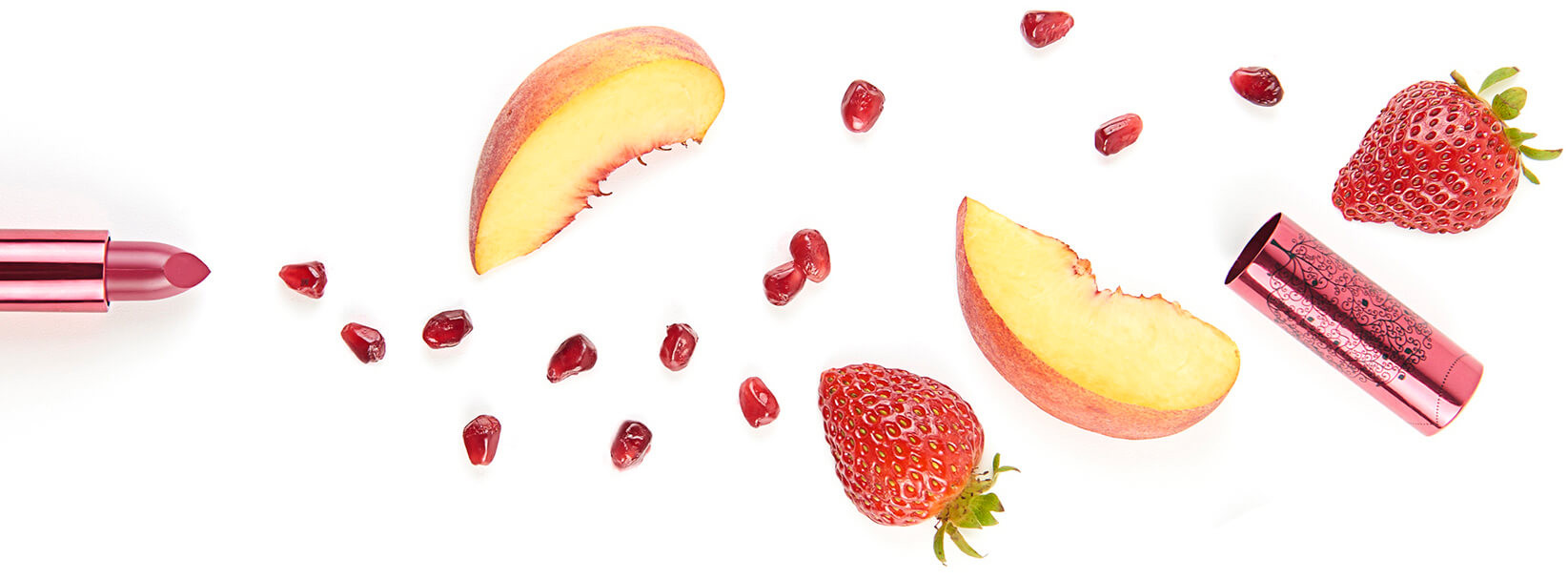
What’s Really in Your Lipstick
Ready to hear what’s in the average stick of lipstick? Are you sure you’re ready? Then let’s start off with those sneaky animal byproducts we mentioned, since they’re downright nasty. Carmine is a common red colorant found in many popular lipsticks today, and is made from the carcasses of the female cochineal beetle; 70,000cochineal beetles must be crushed and killed to produce 1lb of dye. To avoid bug guts in your lipstick, look out for ingredients titled:
- Carmine
- Carminic Acid Lake
- Cochineal/Cochineal Extract
- Dactylopius Extract
- Ci 75470
- Carminic Acid
- E120
- Carmine 5297
- B Rose Liquid
- Crimson Lake
- Natural Red 4
Ever wonder what leaves that oily residue on your lips, after using your favorite lipstick? If you’re not careful about reading your ingredients, that oily residue could be from tallow, or rendered animal fat from carcasses of dead animals. Tallow is a great option for cosmetic formulators who are trying to save a few bucks: slaughterhouses sell the excess byproducts of their carcasses to cosmetics companies, for a low price that is better for their bottom line than using plant based ingredients. Look out for rendered animal fats by avoiding the following ingredients:
- Hydrolyzed collagen
- Suet
- Lard
- Caprylic Acid
- Lauric Acid
- Myristic Acid
- Hydrolyzed collagen
- Suet
- Lard
- Caprylic Acid
- Lauric Acid
- Myristic Acid
What else is hiding in conventional lipsticks? Try heavy metals! While ‘heavy metals’ sound cool, they’re anything but; remember what we said about all that lipstick you’re bound to ingest during your lifetime? Well numerous studies have linked ingestion of these industrial grade minerals and metals to organ toxicity, reproductive harm, and even cancer.
These heavy metals serve as long-lasting colorants that can stand up to the other synthetics in your average lipstick formula, which is why they’re so commonly used. Heavy metals won’t be listed as themselves on your tube of lipstick, they’ll be listed as colorants beginning with “Ci”, “Red”, “Blue”, “Yellow”, “Violet” or “Green”. Some of these heavy metals were once in our lipsticks, and many are still allowed to be used in lip products sold today:
- Lead
- Iron
- Nickel
- Arsenic
- Lead
- Iron
- Nickel
- Arsenic
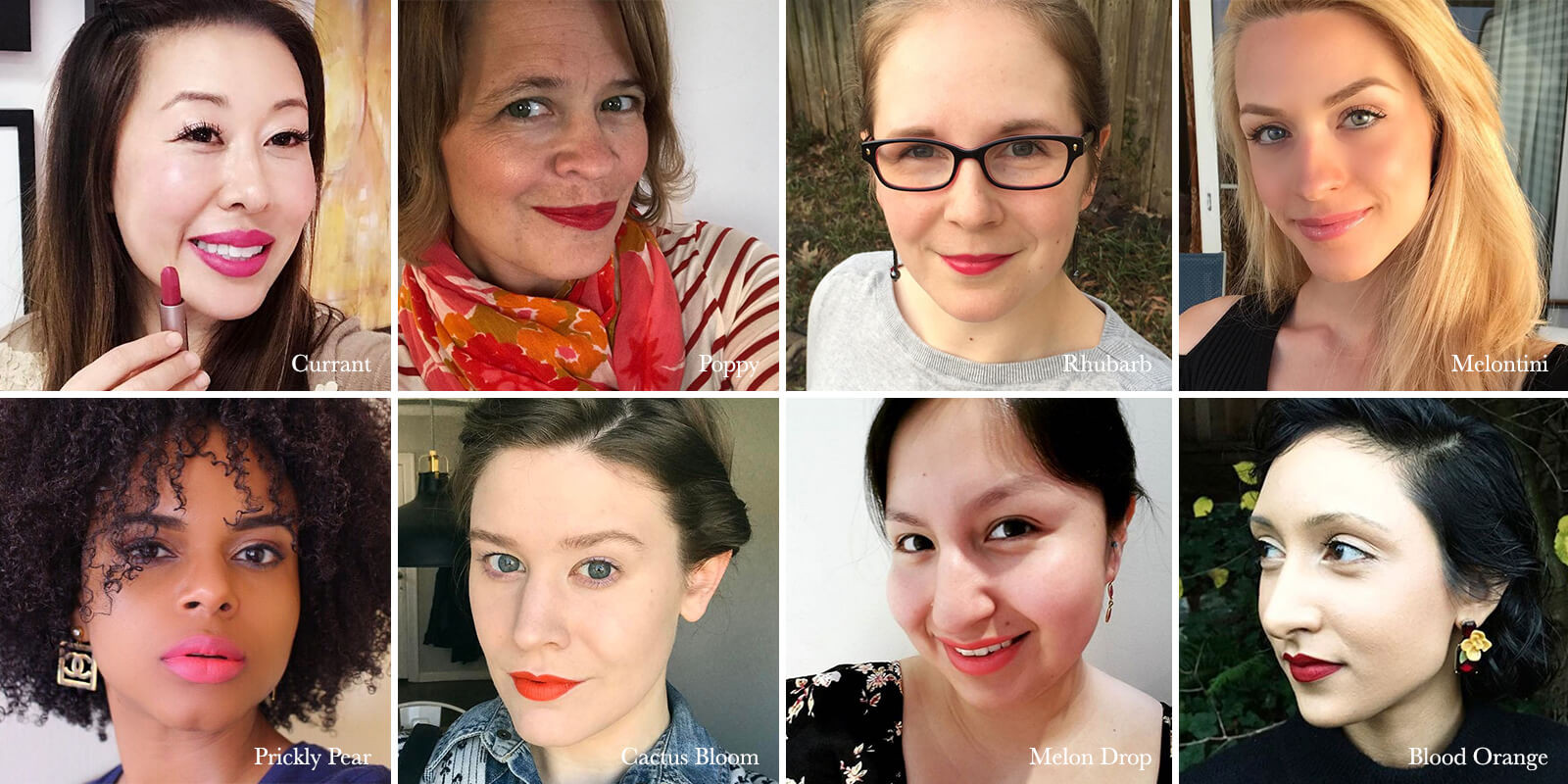
A Better Way to Wear Lip Color
We see natural lipstick as one of the most classic, impactful forms of cosmetic expression. There’s a shade to make anyone and everyone feel beautiful, and we believe in spreading that feeling as safely as possible. That’s why we’ve opted out when it comes to using any animal byproducts, synthetics, or heavy metals in our natural lipsticks. Instead of these conventional ingredients, we’ve formulated dozens of healthy, natural lipsticks to make you feel gorgeous inside and out: beauty, as pure as it is powerful.
Instead of oily, rendered animal fat, we use pomegranate oil and cocoa butter to keep lips soft and moisturized all day long. Pomegranate oil is not only intensely moisturizing, but packed with anti-aging antioxidants to keep lips looking supple, plump, and glossy. Cocoa butter is perfect for our matte lipstick, because this butter is naturally semi-solid; when warmed, this butter softens and is one of the best natural, plant based moisturizers available. The only moisturizers and oils you’ll find in our lipsticks are:
- Pomegranate oil
- Cocoa butter
- Vitamin E (from rice bran)
- Shea butter
- Pomegranate oil
- Cocoa butter
- Vitamin E (from rice bran)
- Shea butter
Now onto the shining jewel of our natural makeup formulations: our fruit pigments. The vibrant, stunning colors extracted from fruit are so pigmented, you’ll find the color payoff just as good or better than any lipstick colored by synthetic, heavy metal colorants. All you have to do is visit your local market’s produce section to check out the impressive color palette we’re working with: vibrant reds, pinks, purples and oranges are all at our disposal, courtesy of mother nature herself. In our vegan lipsticks, we use cocoa beans to supplement the rainbow-forward color palette that’s provided by fruit alone:
- Apricot
- Cherry
- Plum
- Raspberry
- Blueberry
- Blackberry
- Cabernet grape
- Tomato
- Peach
- Pomegranate
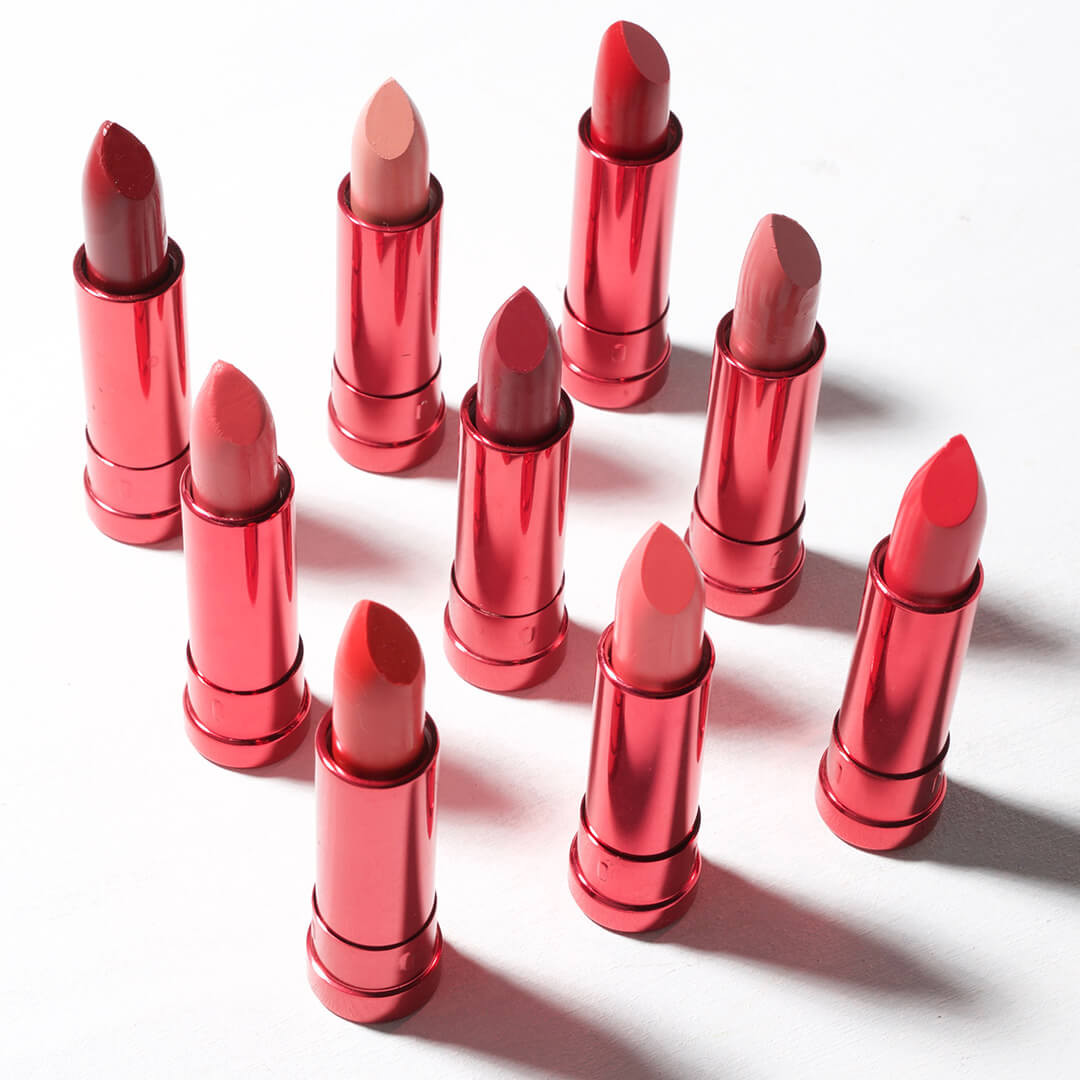
We’ve done all we can to make the best vegan, natural lipstick for the world to enjoy, and we know that the hard work is worth the results. We feel passionately that by giving you safe, beautiful lipstick, you can rest easy knowing that what you’re putting on your lips is bug-free, animal-free, and heavy metal-free. Nobody should ever have to choose between beauty and safety, and that’s why we’re here to help. We’re changing the world with natural makeup, one tube of fruit pigmented natural lipstick at a time.

